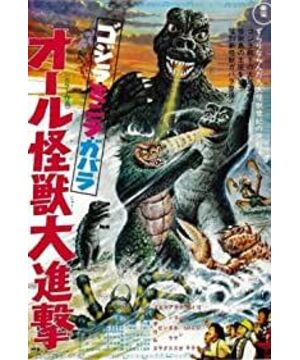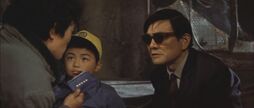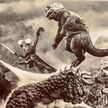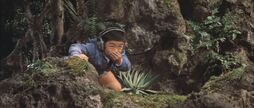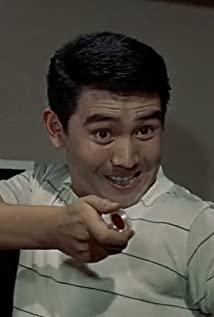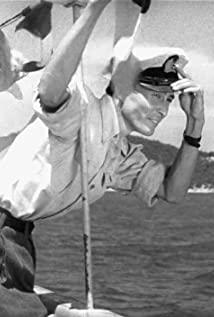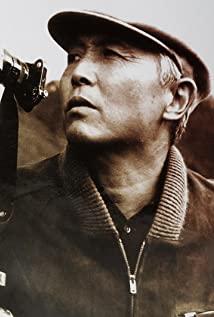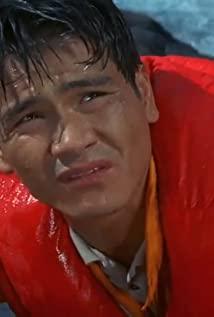1. Plot: Do bionic primary school students dream of electronic thieves?
The movie starts with a primary school student whose delusional power far exceeds that of a non-recognized team of three. Our protagonist Ichiro grew up in a family where his parents were too busy to accompany their children, and he was a coward who was bullied and did not dare to fight back. He was obviously a pioneering protagonist.
At the beginning of the story, the tube he picked up was snatched by "Gabala" - a bad boy as he called it. The depressed protagonist can only go to the monster island to seek relief through delusions at the home he is living in. In addition to the dual-purpose card monsters, there are only three monsters on Monster Island: Godzilla, Minila, and Gabala. Kind, cute, weak and good at Japanese, Mini Ra is of course the self-incarnation of the protagonist, and has become a good friend with the protagonist. And Gabala is of course the embodiment of a bad boy, who often bullies Mini La. Of course, the protagonist relies on genius strategy to help Godzilla and Mini-ra defeat Gabala.
In reality, the protagonist reasonably picked up the fugitive's driver's license and was kidnapped for it. The kidnapped protagonist fell into delusion again, and relied on his genius mind to come up with a brilliant strategy to help Minila and Godzilla defeat Gabala together. At this point in the story, the protagonist obtains courage and inspiration from his delusional mini-ra as usual, and skillfully deals with stupid thieves to escape and bring the criminals to justice.
For ordinary children's films, the next ending is of course that the protagonist relies on his own courage to gain the respect of the bad boys and influence them and become good friends, but this film obviously does not fall into the stereotype. The brave protagonist beat up the boss of the bad boy and joined them. Not only that, but the protagonist quickly proves himself by bullying an innocent uncle, a painter, and escapes with the help of his kind old father, Kenji Sahara.
It can be seen from this that on the basis of absorbing the excellent templates of other films, this work fully reflects the unique and thought-provoking side of its own plot, which is a major advantage of this film.
2. Soundtrack
The opening song boldly adopts the form of a child's solo, and the beautiful singing makes it one of the best in the Godzilla series of songs.
3. Special technical aspects
①As a special film in the 1960s, we certainly cannot have too high requirements for special effects. This movie cleverly sets the story stage on the uninhabited monster island, which saves the cost of making a model of the house and then dismantling it, which is not considered a good way to save money.
②In the whole movie, only Gabala is the new holster, which fully highlights its status as a boss.
③At least 80% of the martial arts in the movie come from dual-use cards, which can not only sell a wave of feelings but also save money. This delicate technique even inspired the famous novels "Ultraman Died in the Sunset" in the future, which shows its far-reaching influence.
④In the robber chase, the slow-motion method is cleverly used, which fully shows the stupidity of the robbers and the wit and bravery of the protagonist; and at the end, the ppt-like fighting shows that the protagonist is in a deep state after the explosion. measured strength.
Summarize
Toho in the late 1960s used such a masterpiece to once again prove the strength of it and the "Godzilla" series as the benchmark for Japanese special photography. It successfully inherited the style of the decisive battle of Monster Island, and added comedy elements like "Home Alone" in the future, wrote a plot that the majority of special chefs liked, broadened the breadth and depth of special photography, and opened Japanese special photography. A new chapter in history.
View more about All Monsters Attack reviews


